Did you know that horses can come in hundreds of different colors and coat patterns? The most common colors are bay, chestnut, and gray. Other less common colors include black, buckskin, cremello, dun, leopard, palomino, perlino, pinto, roan, and white (and nearly everything in between!).
Today, we will be focusing on one of the most common colors – bay.
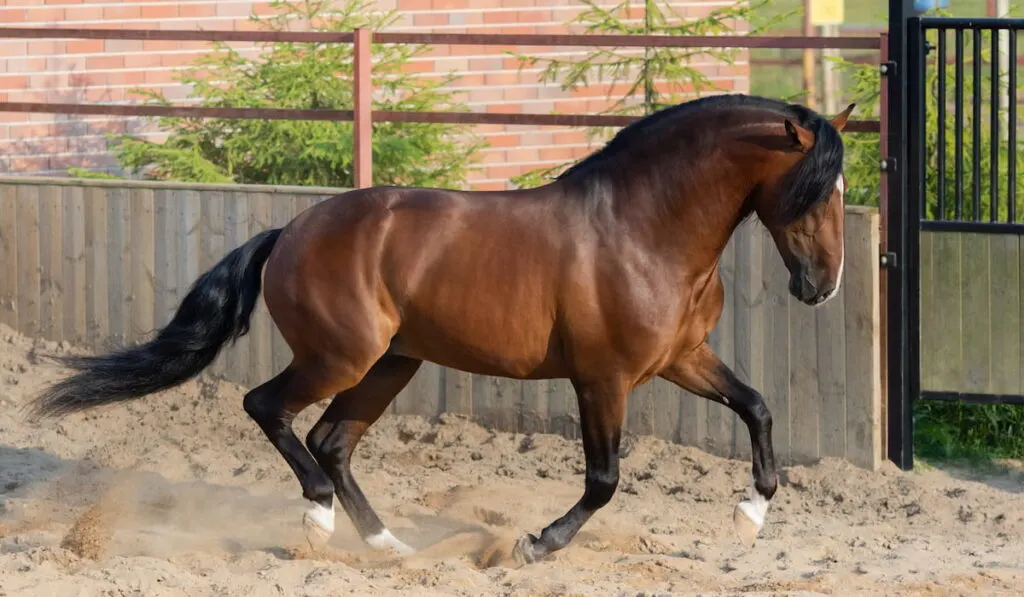
Table of Contents
A Horse of a Different Color
Bay horses are brown and have black points – their manes, tails, and lower legs are black. Bay is one of the most common coat colors in the equine world, but there are many different variations.
These “brown” horses range in color from a light copper red to a brown so dark that it almost looks black (called black bay, mahogany bay, dark bay, or brown). The most widely known variety of a true bay horse is a rich reddish color called blood bay.
It’s All in the Genes
Equine color genetics is a complicated subject, but we have a basic understanding of how it works. A foal receives genes from both parents that dictates what color his coat will be (just like hair color for humans).
There are a handful of genes that control coat color in horses, and they all work together to produce specific (yet wildly different) colors and patterns.
To make it easier to understand, think of these color genes working together in layers – one on top of the other.
Solid colored horses may only display a few of these genes, whereas a uniquely patterned spotted horse may have several of them.
According to their DNA, all horses have a base body color that is either red (chestnut) or black.
This is the first layer of genes. In bay horses, a second gene controls the distribution of black hairs and confines it to just the points. This is referred to as the agouti gene.
Bay horses display evidence of both the recessive red base color gene and the black, but the agouti gene suppresses the black coloring and confines it to the points. See, it’s not complicated at all!
I’m kidding, of course. But you get the idea.
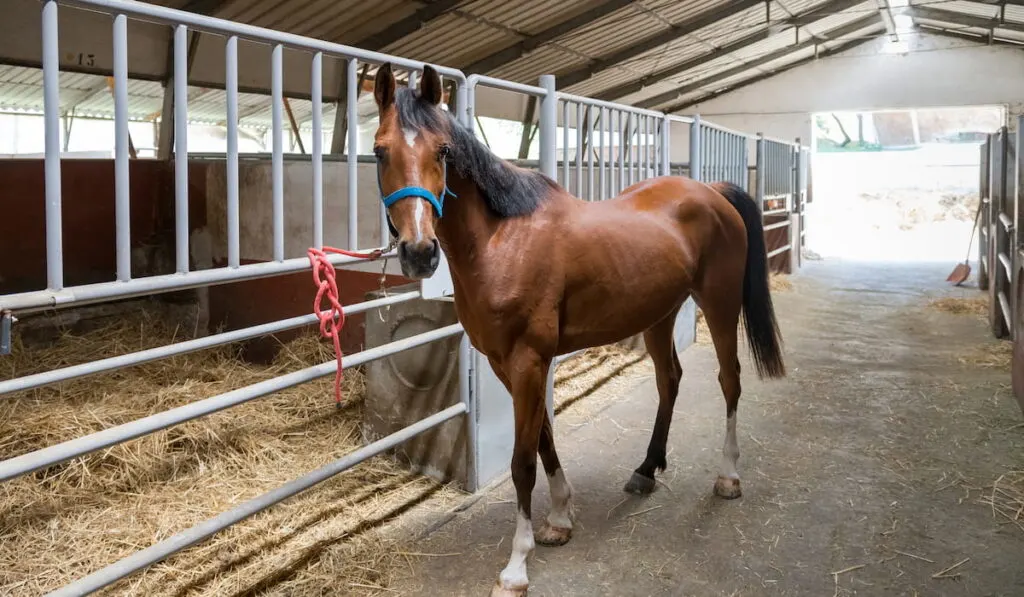
Genetic Representation
If you were to order a coat color test on a bay horse, you would see one of the following on your equine DNA report:
| EEAA | Homozygous Black Gene and Agouti. All offspring will be bay in absence of other color modifiers. |
| EEAa | Homozygous Black Gene, Heterozygous Agouti. All offspring will be black based but could be bay or true black in the absence of other color modifiers. |
| EeAA | Heterozygous Black Gene, Homozygous Agouti. Offspring could be red or black. Any black-based offspring will receive Agouti, diluting the color to bay (in absence of other modifiers) |
| EeAa | Heterozygous for black and agouti. Any color offspring are possible. |
Determining your horse’s coat color is as easy as pulling a few hairs and sending them in for analysis. My article on Equine DNA Testing has some great resources for you to check out.
50 Shades of Bay
Sometimes, horses have extra genes on top of their bay coat genes, which cause them to have a lighter coat or irregular spotting. Here are some of the different variations of bay coat colors and lighter bay family colors:
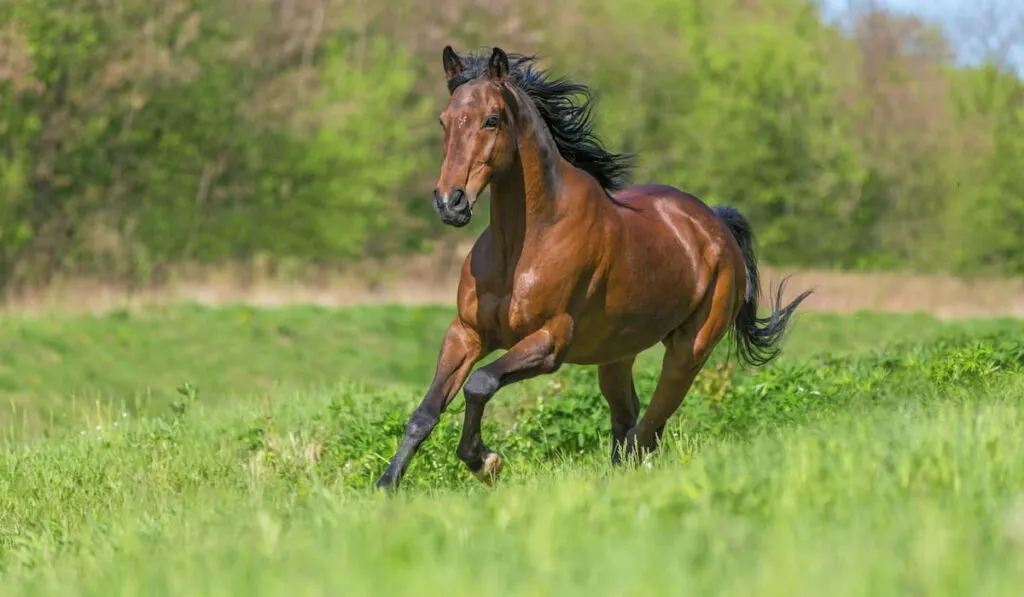
Basic Variations of Bay Horses
| Black Bay | Extremely dark bay. Typically has a brown muzzle and brown flanks. May appear to be black but DNA tests with Agouti. |
| Blood Bay | Dark red, almost chestnut color but with black points |
| Dark Bay | Dark brown with black points |
| Mahogany Bay | Dark reddish-brown coat with black points |
| Wild Bay | Also called pangare or mealy bay. Typically has a very light-colored or white muzzle and a lighter body coat. |
| Brown | Brown with black points (a brown horse with no black points is likely a chestnut, instead) |
Photos Of Different Shades of Bay
Here are some photographs of some bay horses and the shade category I would group them into. Keep in mind that bay is bay, genetically all of these horses is the same. What shade of bay they are is subjective to the person viewing the horse and their own equine background.
Standard Bay
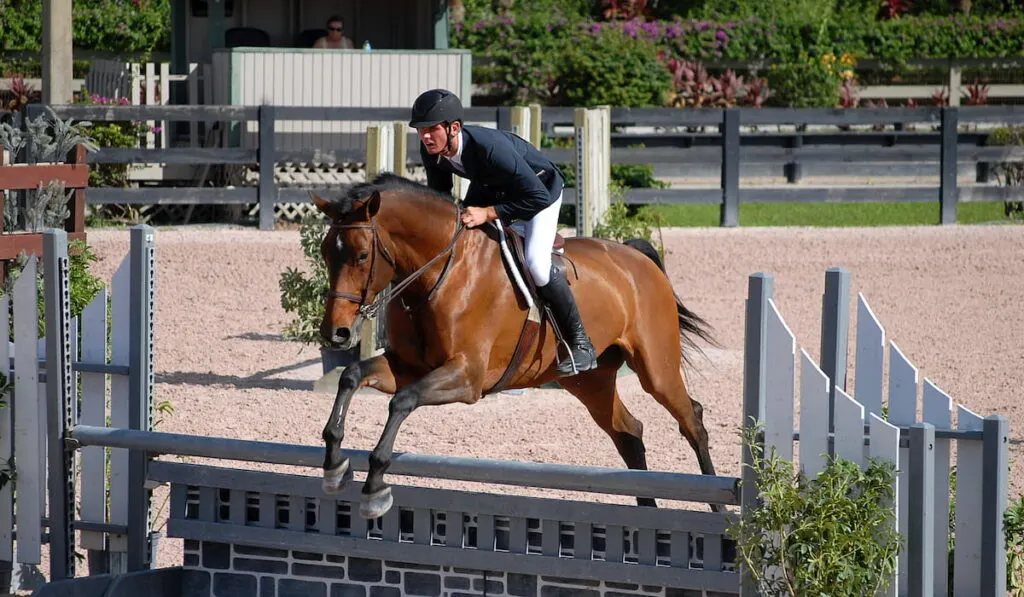
Blood Bay
Blood bay horses typically have more of a reddish sheen to them. You might call this horse a “blood” bay. Note her more traditional bay colored foal at side.
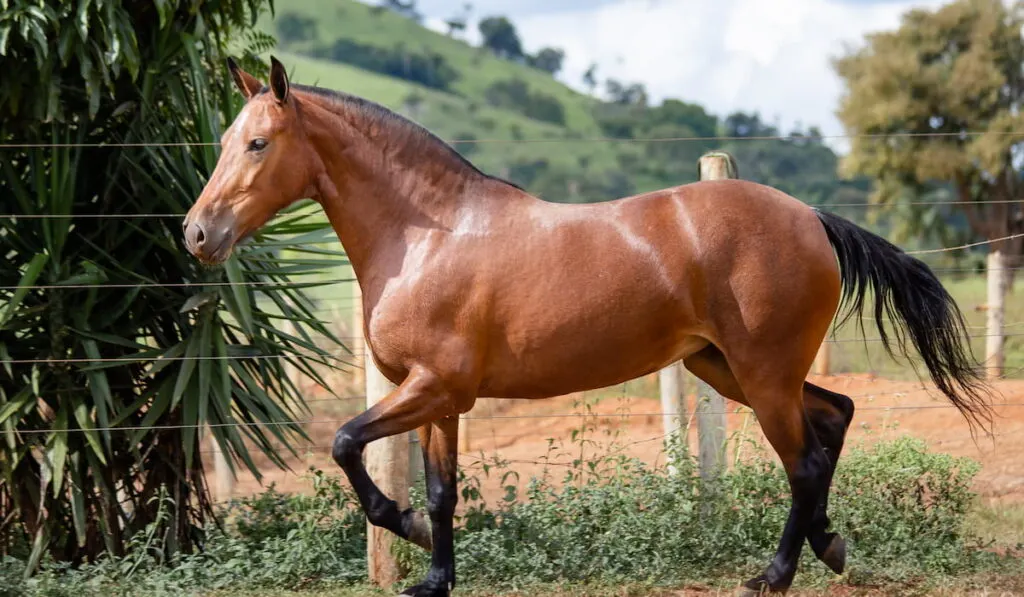
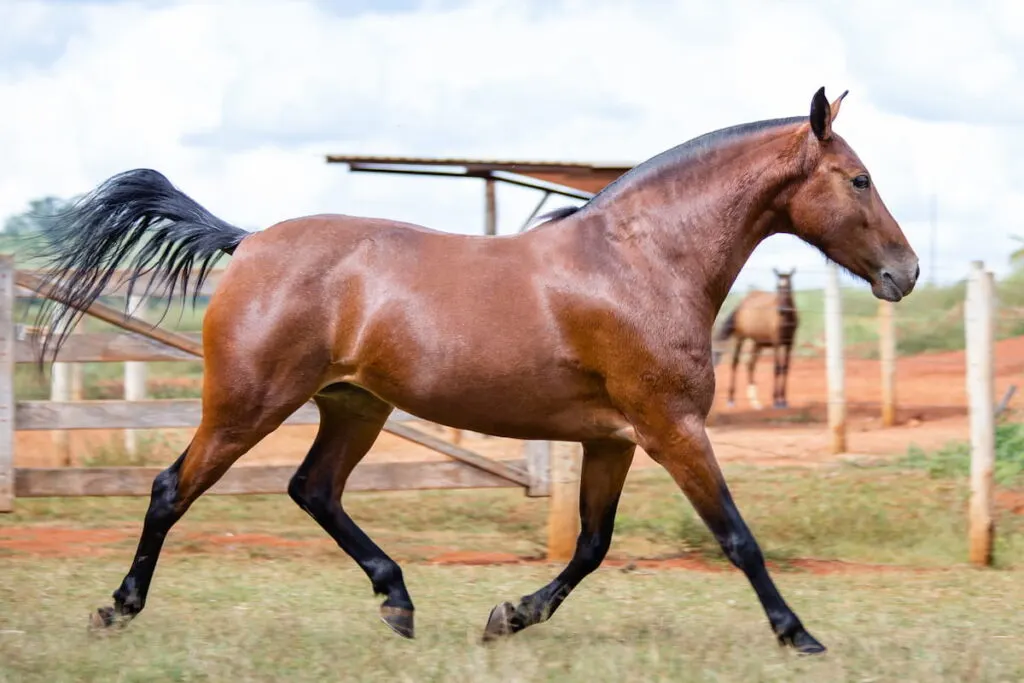
Dark Bay
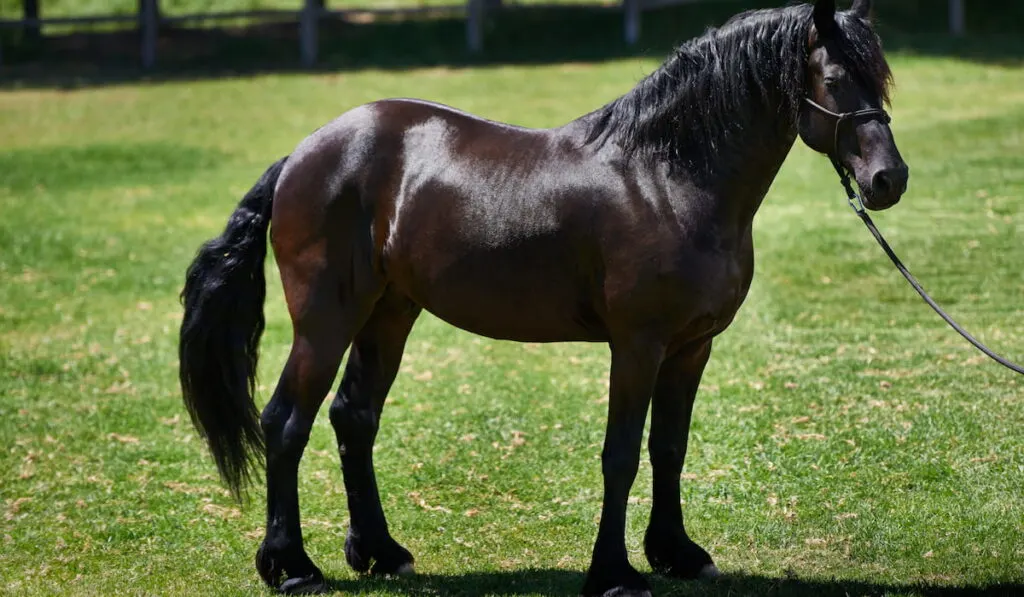
Brown / Dark Bay
I would call this horse brown or dark bay. If it were my horse I would also color test it just to be sure it wasn’t a sun-faded black.
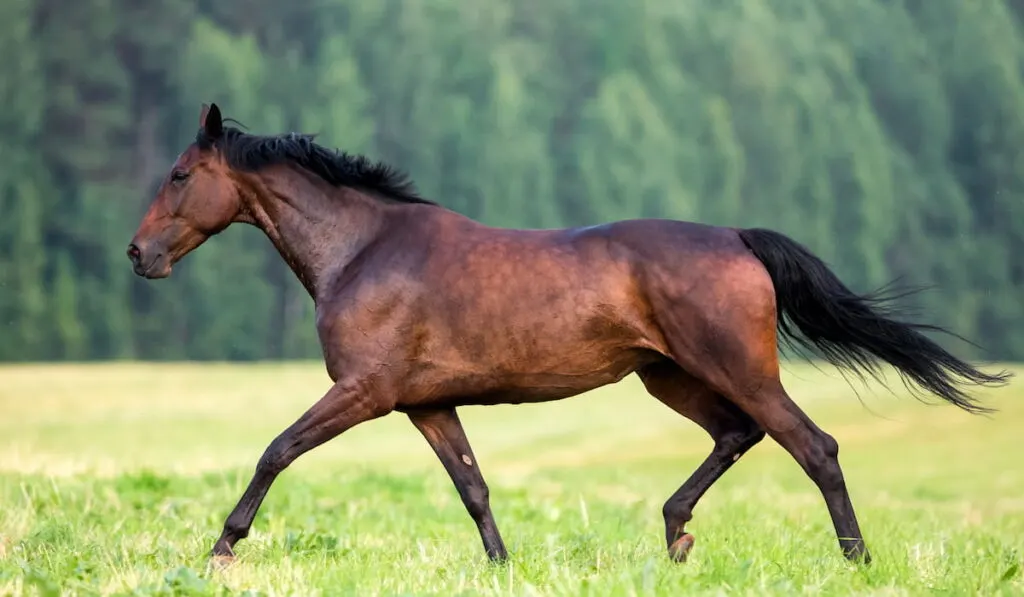
Brown
I would classify both of the horses below as brown. With a brown horse, though, it is always best to do a dna test to check for cream and agouti. No agouti means your horse is just a sun-faded black!
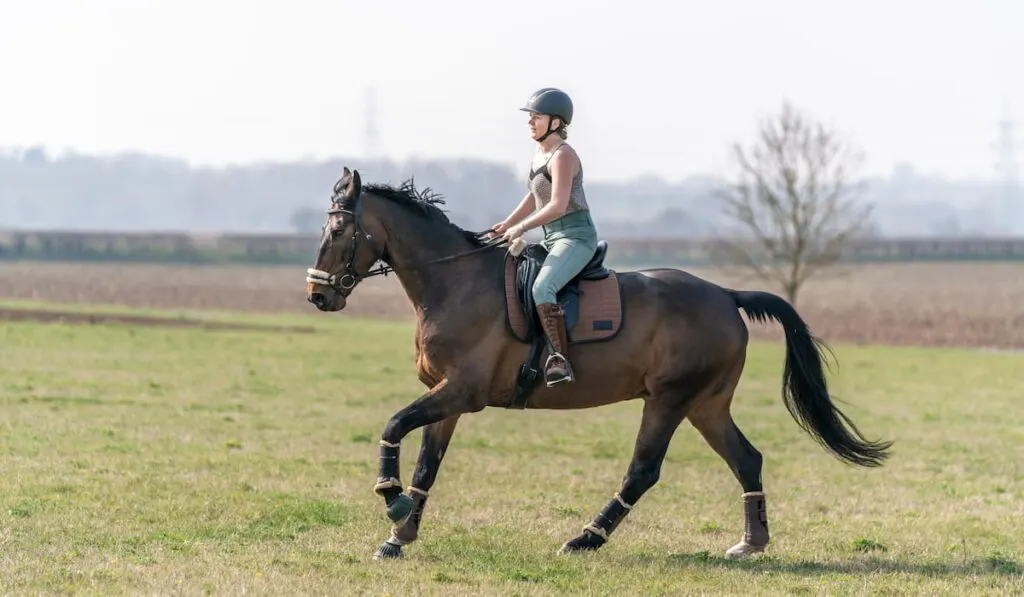
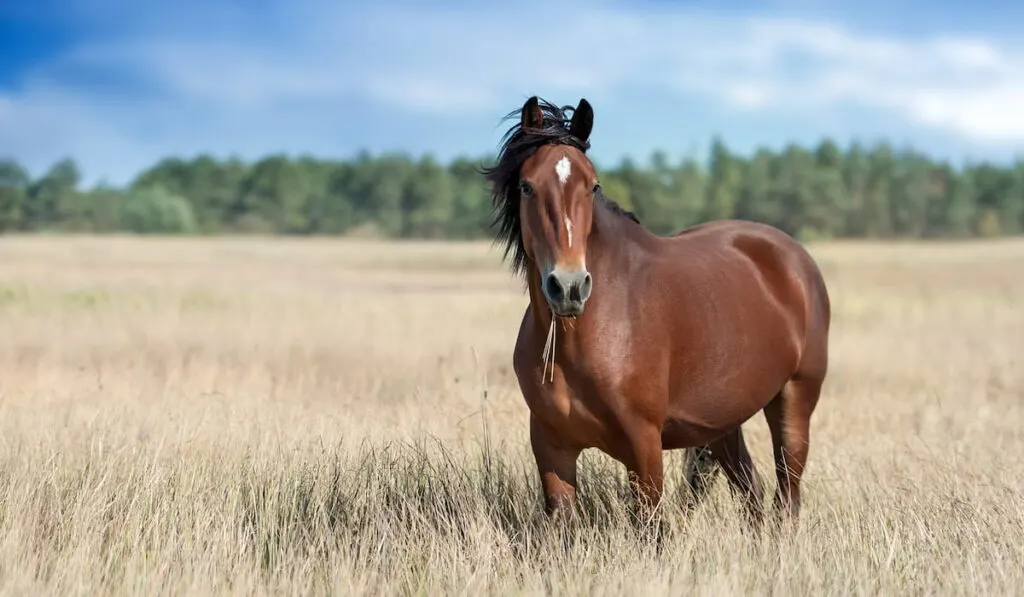
Mahogony Bay
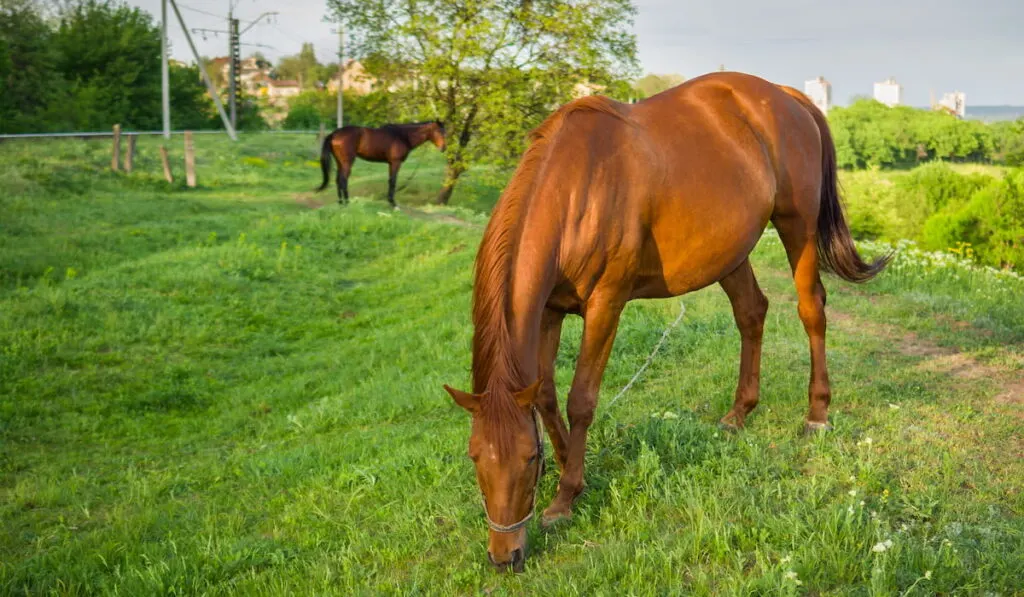
Wild Bay
This horse has mildly expressed “pangare”. His body hasn’t been diluted much but you can see the white “mealy” muzzle.
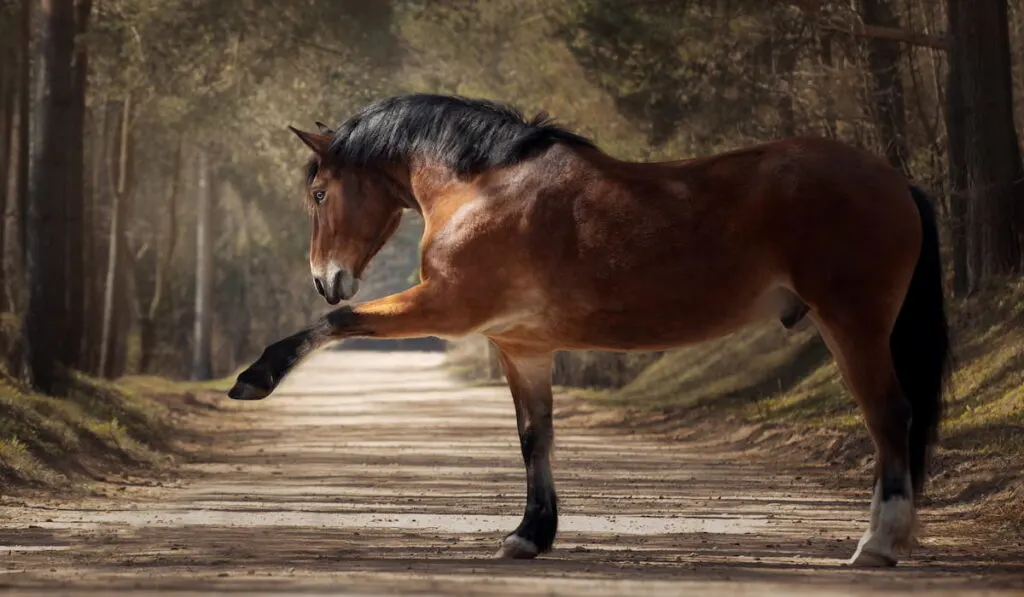
The horse below is a BLM mustang I once trained that shows more moderate expression of wild bay. You can see his flanks, muzzle, eyes, ears and even longer leg hairs are a much lighter brown than his body.
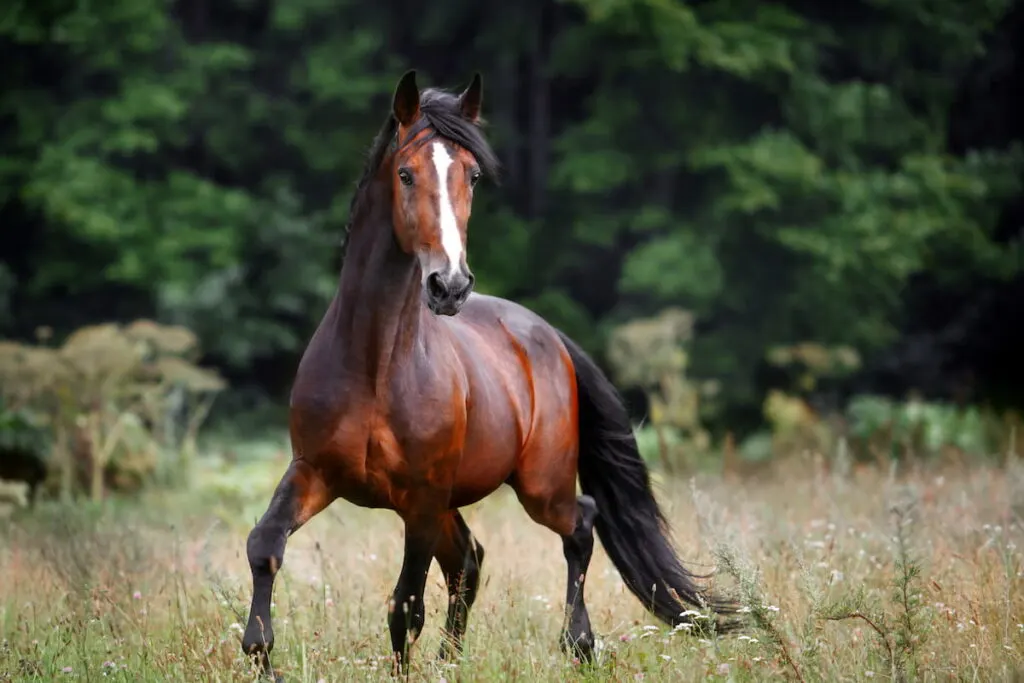
Horse Colors With A Bay Base
There are many other lighter colors within the bay family, due to the added layers of some extra genes (dilution, dun factor, and roaning for example). These are just a few examples.
Note: Clicking on the color name takes you to the post for that specific color.
| Buckskin | Cream or gold coat, black mane and tail |
| Perlino | Cream, may have reddish points, pink skin, and blue eyes |
| Bay dun | Tan, primitive markings |
| Amber champagne | Warm brown and gold, hazel eyes |
| Silver bay | Brown/gray (chocolate) with light mane and tail |
| Bay pinto | Horses with bay body coloring but pinto markings |
| Bay leopards | Bay horses with the spotted leopard complex gene |
| Bay roan | Red body color intermixed with white hairs |
Famous Bay Horses
Because bay is one of the most common coat colors, you’re probably not surprised to learn that there are many famous horses sport this rich shade.
- Valegro. This bay-roan dressage horse is a double World Champion. The Dutch Warmblood set world records in the Grand Prix, Grand Prix Special, and Grand Prix Freestyle, and was awarded several Olympic medals during his career.
- Budweiser Clydesdales. The Anheuser-Busch Brewing Company began using these handsome bay draft horses in 1933 to celebrate the end of prohibition. The public fell in love, and they began an extensive breeding program to produce high-quality (always bay) horses for their carriages and promotional events.
- Sam. A top-level eventing horse, this talented bay was the World, European, and Olympic eventing champion – all at the same time!
- Figure. In 1792, a hardy little bay horse was given to singing teacher Justin Morgan to settle a debt. He could outrun and out-pull all of the local horses, and became the foundation sire for the Morgan breed.
- Finder’s Key. This bay racehorse turned actor took the leading equine role in Seabiscuit as the famous racehorse and War Horse as Joey.
- Thee Cyclone. A dark bay Arabian, Three Cyclone played the young Black Stallion in 2003’s The Young Black Stallion, although he had to be dyed black for the movie.
- Shergar. This British racing bay was retired to stud at only 5 years old, but was tragically stolen and held for ransom. A movie loosely based on the events debuted in 1999, starring Mickey Rourke.
The Cleveland Bay
Only one breed of horse must be bay in order to be registered.
The Cleveland Bay is a fine English horse, hailing from the Cleveland district of Yorkshire. A mix of Barb, Andalusian, and “Chapman” horses (popular packhorses of the era) produced these strong, versatile horses that influenced many other modern breeds.
The breed nearly became extinct due to crossbreeding and several world wars, but it experienced a resurgence in the 1970s. Cleveland Bays and Cleveland Bay crosses serve the Queen of England as official coach horses, and Prince Philip drove a team of part-bred Cleveland Bays during the early days of carriage driving (combined driving).
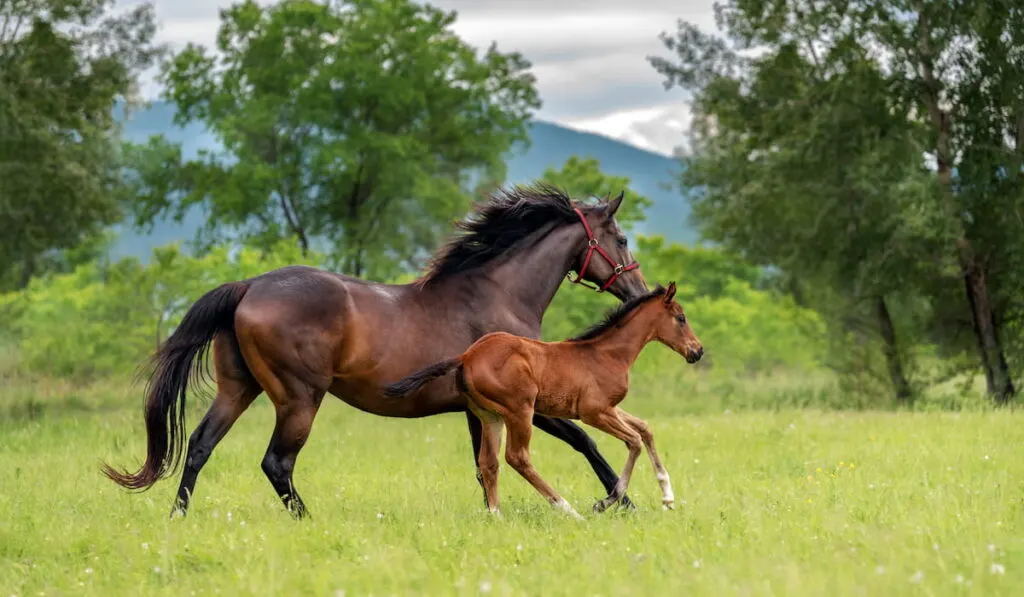
Other Bay Horse Breeds
Because bay is such a common coat color, most registries accept bay colored horses. There are a few very specific breeds that require horses to be one particular color (Friesians must be black, Suffolk Punches must be chestnut, for example).
A handful of breeds include horses with a limited coat color range including (but not limited to):
- Clydesdale. While Clydesdales can generally be any color, the Budweiser Clydesdales must be a deep, rich bay with white fluffy feet. Budweiser actually breeds these horses specifically for their trademark beer wagons and television commercials, and this plays a large part in why many Clydesdales in the US today are bay in color.
- Morgan. Justin Morgan owned a little bay horse in Vermont in the mid-1800s, and he became the sire for the Morgan breed as we know it today. This deep bay color is still prevalent throughout the breed.
- Thoroughbred. While the Jockey club often denotes bay horses as “brown,” many of the greatest racehorses of the past were bays: Seabiscuit, American Pharoah, Seattle Slew, Northern Dancer, and Barbaro, just to name a few.
- Standardbred. These racing trotters are generally bay, brown, or black. Because the racing industry produces a large volume of Standardbred horses, you will often see a bay Standardbred leading a new life as a pleasure or driving horse after his racing career.
- Hackney horse and pony. These fancy driving horses are generally a solid color, and bays are exceptionally common.
- Warmblood breeds. Technically, most warmbloods can be any color. But a few specific breeds have a tendency to lean towards bay coloring, including the Dutch Warmblood, Holsteiner, Oldenburg, Selle Francais, and Trakhener.
- Marwari. In individuals of this rare breed from India, a “distinctive, metallic, bright bay is the most desirable” color.
- Canadian Horse. Most Canadian Horses are dark bay (or black) – around 80 percent! It is thought that the Morgan’s foundation sire, the little bay horse Figure, likely had Canadian horse ancestry.
Bay horses are found in almost every breed, so if a bay horse strikes your fancy – chances are that you can find a good match!
Breeds That Don’t Have Bay Horses
Despite being one of the most common colors among horses, there are still a handful of breeds in which the bay color does not exist. These purebred horse breeds cannot be bay.
- Suffolk Punch. The entire breed of suffolk punch horses are sorrel or chestnut. The black gene does not exist in the breed. This means that if you have your heart set on a bay horse, you would need to look at one of the many draft breeds that do carry the genes necessary.
- Friesian Horses. Many love seeing the Friesian horse with it’s gorgeous long mane and flowing tail. In fact, it’s commonly used in television series and feature films. This beautiful breed, though, only comes in black (and very rarely chestnut). Because they don’t carry Agouti, a purebred Friesian can never be bay.
- Hafflinger. Much like the Suffolk Punch, the Haflinger horse breed is always chestnut. The shades range from a very pale yellow to a bright chestnut with a white mane and tail. The black gene, again, is absent from the breed and so purebred Haflinger horses can never be bay.
Frequently Asked Questions
Bay horses do not typically have a true dorsal stripe. When they do, the color is called bay dun (or simply dun). Some bay horses, though, may have a black stripe down their back that is not a true dun stripe. This stripe is typically the result of countershading. In almost all cases, you can tell if the stripe is a true stripe or countershading by evaluating whether the horse has any other dun characteristics, whether the horse has a dun parent, whether the dun gene exists in the breed.
Bay horses typically look best in black, silver, red, pink, purple, royal blue or turquoise. The key is finding the color that either highlights your bay horse’s coat or contrasts with it nicely.
A bay horse can be homozygous black. It is also possible for bay horses to produce pure black offspring depending on their genetic makeup.
Bay horses can turn grey if they have at least one gray parent. Grey is a color modifier, just like agouti. If you think of genes like layers, bay is a base layer and if gray is present, that color will lay on top causing the bay horse to turn grey.
Bay horses can have the same white markings as any other horse. They can have socks, stockings, blazes, etc. They can even be tobiano, roan, appaloosa or grey. It all depends on what other color genes are present on the bay base.
Final Thoughts
Bay horses are very common and can be any of a number of different breeds. They are more than just a brown horse with a black mane. Their beautiful reddish coats and black points make a striking contrast that many love to admire. The best news is, if bay is a color you love, you have many different breed options to choose from!

